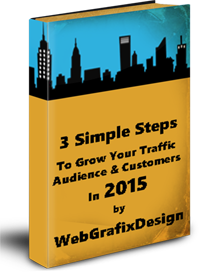Restructuring the Way Your Website Should Think About SEO
 A few years ago, Search Engine OptimiSation (SEO) could be neatly defined by just about anyone in the industry. The optimiSation process could be broken up into “on page SEO” and “off page SEO,” with most of the industry focusing on “on page” while passing the “off page” stuff to the web designers.
A few years ago, Search Engine OptimiSation (SEO) could be neatly defined by just about anyone in the industry. The optimiSation process could be broken up into “on page SEO” and “off page SEO,” with most of the industry focusing on “on page” while passing the “off page” stuff to the web designers.
How SEO Used to Be (And for Some, Still Is)
The process was fairly straightforward: you spend time researching your competitor’s websites, the keywords they rank for, the keywords you want to rank for, figure out some high and low competition keywords, a few long-tails, mix them all into a KWD formula, get your header tags in order, dabble with some LSI keywords and then create the content.
Your off-page crew (if you were lucky enough to have one, otherwise you did it yourself) would get the alt-text on the pics, make sure all the meta tags and meta data were correct, optimize the URLs and page names, ensure all the coding was error-free, etc. In short, it was a fairly precise and technical operation.
The New Outlook on SEO Moving Forward
If you don’t know what all of those terms mean, don’t worry. Many of them are either obsolete or soon will be. The fact of the matter is that SEO used to mean building a website with a search engine in mind—that’s what it meant, after all: search engine optimisation. But now, try to build a website for a search engine and you’ll likely find yourself low in the SERPs (Search Engine Result Pages) or even possibly penalised.
This is because a few years back, Google (the Big Daddy of search engines) started realizing that their algorithm lent itself to a predictable optimisation formula that many sites were using (and abusing). Understanding that people would eventually stop using them as a search engine if every time they punched in a question, porn came up because of the way that site was optimised, Google set some serious changes into motion.
Focus on User Experience Optimization
While there’s no universally recognized word or phrase for the new outlook on SEO (it’s simply just called SEO), User Experience Optimisation is pretty explanatory. The goals are the same: when you want to rank higher on the SERPs, get more traffic and eventually, higher conversion rates, you will need to optimise your website. Only now, instead of optimising it with the search engine in mind, you should optimise it with your user’s experience in mind.
What this means is you should have fresh, creative, helpful content that is useful for your target demographic. What are the people visiting your site wanting to know? Tell them, in no uncertain terms. What do they want to be able to do? Allow them to do it, with no messing around or hassle.
The bottom line is the better you make the user experience on your website, the better it will be optimised, not only for humans, but for search engines as well. Why? Because Google has changed its algorithm to rank sites that have high user experience ratings higher in the SERPs
What About Old SEO Aspects?
Of course, this doesn’t mean that you shouldn’t still get into the control panel back end of your site and enter alt-text on your pictures, resize them, make sure your content has relevant keywords and phrases, etc. It simply means that your focus with SEO is going to be on content creation, or content marketing as some people call it. This means more content on your web pages, more blogs, interconnectivity from your site to your social media and much, much more than we can cover in this short space.
SEO FAQs
Q: Is SEO dead?
A: For the past three years, there has been a growing faction that claims SEO is dead – it is not. It isn’t even dying, it’s just evolving to incorporate new techniques and keep up with the times. SEO is not dead, don’t ever ignore it.
Q: Is SEO worth the time and investment?
A: SEO in the modern sense is so much more than just traffic and lead generation. SEO is integrated into your content marketing, which is vital to your sales funnel. Content marketing is integrated into your social media marketing which is integrated into your website which is…you get the picture. Every penny and second you spend on SEO is an investment in your own returns, as long as you’re spending that time and money on quality SEO services.
At WebGrafixDesign on site SEO comes as part of your webbuild: We have many specific Off Line SEO strategies implemented determined by the type of and business market you are in: Call or contact us for a No Obligation Free Consultation Today!

